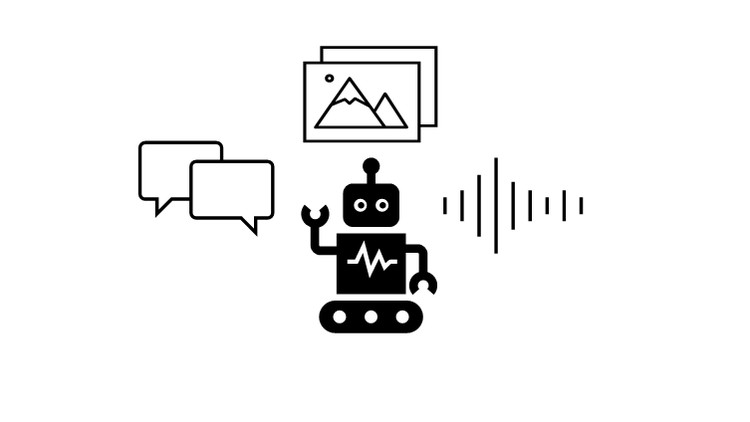
Generative AI – English version
What you will learn
Generative AI definition, areas of applications, mappings like txt2txt, img2txt, txt2img and txt2voice
How ChatGPT works, and the underlying tech behind like GPT, Large-Scale Language Models (LLM) and Transformers
How Latent Diffusion, StableDiffusion and DALL-E systems work
Generative Adversarial Networks (GANs) and Variational Auto Encoder (VAE)
The good, bad and ugly faces of GenAI, and how to adapt to the new tech
Build ChatGPT clone using OpenAI API and Streamlit
Build NLP applications using OpenAI API like Summarization, Text Classification and fine tuning GPT models
Build NLP applications using Huggingface transformers library like Language Models, Summarization, Translation, QA systems and others
Build Midjourney clone application using OpenAI DALL-E and StableDiffusion on Huggingface
Description
Hello and Welcome to a new Journey in the vast area of Generative AI
Generative AI is changing our definition of the way of interacting with machines, mobiles and computers. It is changing our day-to-day life, where AI is an essential component.
This new way of interaction has many faces: the good, the bad and the ugly.
In this course we will sail in the vast sea of Generative AI, where we will cover both the theoretical foundations of Generative models, in different modalities mappins: Txt2Txt, Img2Txt, Txt2Img, Img2Txt and Txt2Voice and Voice2Text. We will discuss the SoTA models in each area at the time of this course. This includes the SoTA technology of Transformers, Language models, Large LM or LLM like Generative Pre-trained Transformers (GPT), paving the way to ChatGPT for Text Generation, and GANs, VAE, Diffusion models like DALL-E and StabeDiffusion for Image Generation, and VALL-E foe Voice Generation.
In addition, we will cover the practical aspects, where we will build simple Language Models, Build a ChatGPT clone using OpenAI APIs where we will take a tour in OpenAI use cases with GPT3.5 and ChatGPT and DALL-E. In addition we will cover Huggingface transformers and StableDiffusion.
Hope you enjoy our journey!
Content